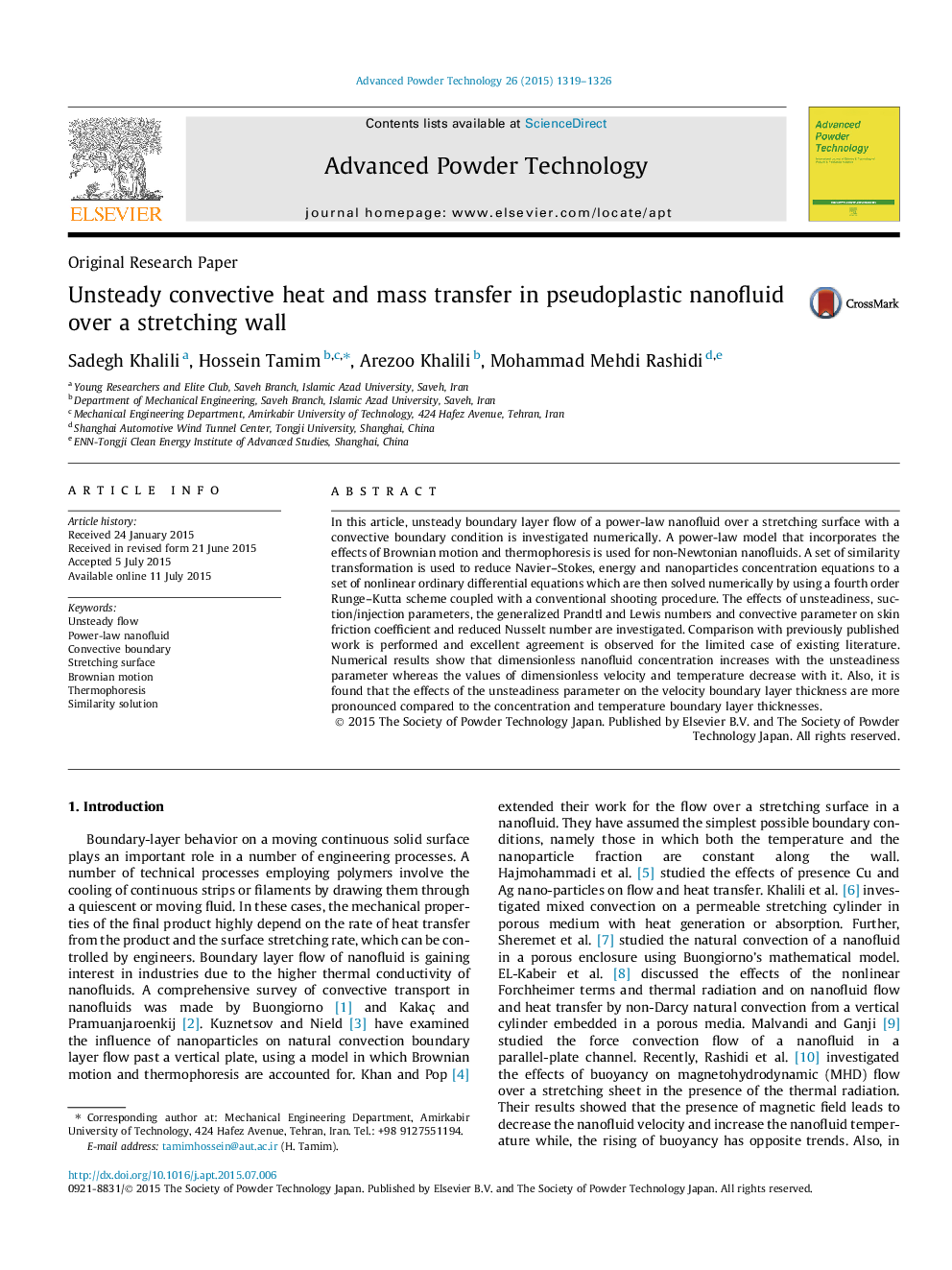| Article ID | Journal | Published Year | Pages | File Type |
|---|---|---|---|---|
| 144017 | Advanced Powder Technology | 2015 | 8 Pages |
•A power-law model including the effect of Brownian motion and thermophoresis is used.•A numerical scheme is employed to solve the highly non-linear equations.•The convective boundary condition is considered and studied for the stretching wall.•We model three kinds of nanofluids: pseudoplastic, Newtonian and dilatant nanofluids.•The effects of Brownian motion and thermophoresis are examined.
In this article, unsteady boundary layer flow of a power-law nanofluid over a stretching surface with a convective boundary condition is investigated numerically. A power-law model that incorporates the effects of Brownian motion and thermophoresis is used for non-Newtonian nanofluids. A set of similarity transformation is used to reduce Navier–Stokes, energy and nanoparticles concentration equations to a set of nonlinear ordinary differential equations which are then solved numerically by using a fourth order Runge–Kutta scheme coupled with a conventional shooting procedure. The effects of unsteadiness, suction/injection parameters, the generalized Prandtl and Lewis numbers and convective parameter on skin friction coefficient and reduced Nusselt number are investigated. Comparison with previously published work is performed and excellent agreement is observed for the limited case of existing literature. Numerical results show that dimensionless nanofluid concentration increases with the unsteadiness parameter whereas the values of dimensionless velocity and temperature decrease with it. Also, it is found that the effects of the unsteadiness parameter on the velocity boundary layer thickness are more pronounced compared to the concentration and temperature boundary layer thicknesses.
Graphical abstractFigure optionsDownload full-size imageDownload as PowerPoint slide
